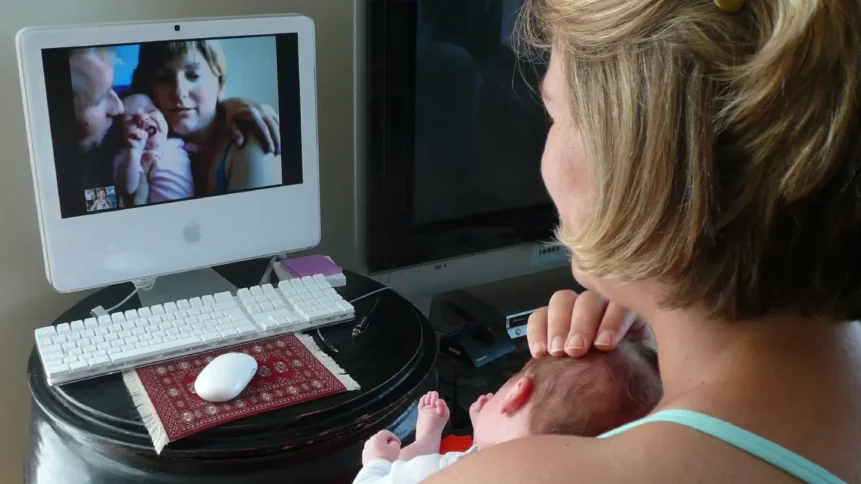Has working from home killed the art of networking in tech?

|
Getting your Trinity Audio player ready...
|
The word ‘networking’ has the power to elicit a host of different reactions. While some may feel enthused by the opportunity to make new connections, others groan and shrink away from polite chitchat and tiny sandwiches.
But, love it or hate it, working to expand one’s professional social by reaching out to new people does have its benefits. Ideas, collaborations, and even job opportunities have been known to spring up from casual chats at networking events. Even outside business, bold LinkedIn connections have returned solid new friendships and even the big L-O-V-E.
However, networking is not for everyone, and science backs that up. A study from the London School of Economics found that people who have less appreciation for social involvement experience fewer positive effects of daily networking than those who do, or even no or negative effects.
In fact, another study showed that it is only those who seek ‘relatedness fulfillment’ – have a need to feel connected to others – or employability-enhancing competencies whose careers benefit from networking. What’s essentially cold calling for professional connections only benefits extroverts; those who are energized by being around other people. One study found that extroverted people had a 25 percent chance of securing a higher-earning job and, while this isn’t necessarily due to them taking more advantage of networking opportunities, it is likely that their affinity for making connections does impact their career success.
While, normally, about 50 percent of people in a business self-identify as introverts, in IT departments this is as high as 86 percent. The stereotype of the average tech ‘geek’ does tend to be someone shy, reserved, and more comfortable with computers than with social interactions.
Whether that is necessarily true today – many of the quarter-zip-donning, Silicon Valley start-up tycoons tend to be very comfortable sharing their views – there’s no smoke without fire. This perhaps lends your developers, data scientists, and IT specialists to avoid networking opportunities more so than other professionals. So, when 2020 came around, not many of them may have been too disappointed about the postponement and cancellation of looming networking events.
According to a Yale University study, both our professional and personal networks shrunk by almost 16 percent, or about 200 people, during the COVID-19 pandemic. Naturally, having to remain indoors for months on end would take its toll on our relationships, however, the damage was somewhat mitigated thanks to webcams, microphones, and video conferencing software. Those of us who could work from home did so, which included the vast majority of the IT industry, a large portion of which was already doing so.

“Apollo 11 Video Restoration Press Conference / Newseum” by NASA Goddard Photo and Video is licensed under CC BY 2.0.
When it became clear that the pandemic wasn’t going to be wrapped up anytime soon, those calendared meetings, conferences, and other networking opportunities were moved online rather than canceled. But while the move benefitted workers in many ways – reduced travel costs, time away from home, and carbon footprints – it was not a perfect solution. Research has shown that generating creative ideas is easier when face-to-face because concentrating our vision on our screens narrows our cognitive focus.
“This narrowed focus constrains the associative process underlying idea generation, whereby thoughts ‘branch out’ and activate disparate information that is then combined to form new ideas,” the researchers wrote.
A separate study also found that humans find it unnerving to observe a person’s enlarged face, so having a poor camera setup during a virtual meeting can unconsciously trigger the release of stress hormones. Indeed, even a small lag between when a person performs an action and when others can observe it can cause additional mental exertion for meeting participants. So for those introverts who were already reluctant to engage in networking opportunities, this transition did not necessarily make it easier for them to reap the benefits.
Attending networking events has never been the only way an employee can expand their professional circle. Businesses have used customer relationship management (CRM) solutions for decades to help cultivate connections with customers, prospects, clients, and other stakeholders. The software provides a centralized database that stores valuable information about contacts, including their preferences, communication history, and key interactions. This can be used to personalize communication and keep track of the relationship lifecycle, ultimately strengthening it. Even before the pandemic, CRM usage was on the rise, but the industry is expected to grow by another 12 percent in the next seven years. There is also increasing interest in ‘personal’ CRMs that individuals can use to keep track of their relationships with family and friends, like Dex, Clay, and Hippo.
Some businesses also make use of databases of executive profiles, like Boardroom Insiders. These are curated by industry experts and provide valuable insights into key decision-makers within target organizations, including their backgrounds, responsibilities, and strategic initiatives. While the primary intention is for the intelligence to be used for targeted sales pitches or business development, consultants, entrepreneurs, and jobseekers have also been known to utilize them to help them be seen in their professional ecosystem, building awareness and credibility. Usage of relationship intelligence platforms was high during the pandemic, as individuals needed more assistance in making impactful connections remotely.
This shows that, despite the transition to home-working, there is still an appetite for networking. It is certainly a priority for Generation Z, many of whom started their careers during or after this shift and feel bereft of professional connections as a result. Networking remotely has been proven to still be effective, despite the challenges. A study of 1,000 remote employees found that 85 percent of those who made an effort to be noticed by their employer were successful.









